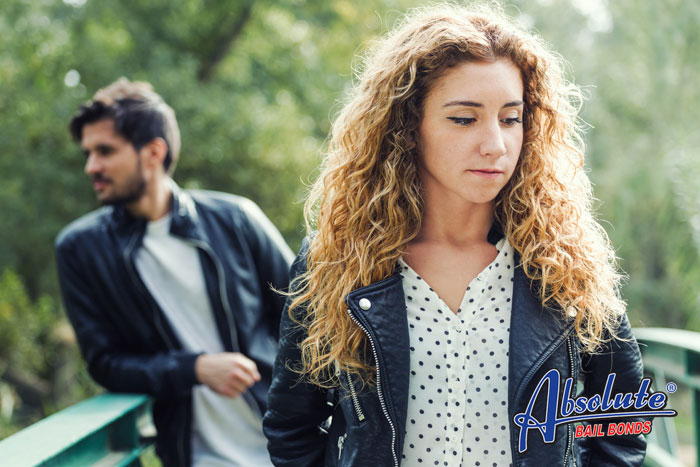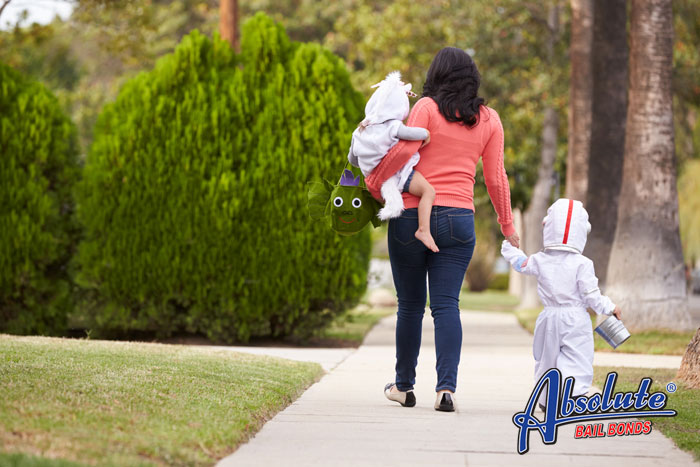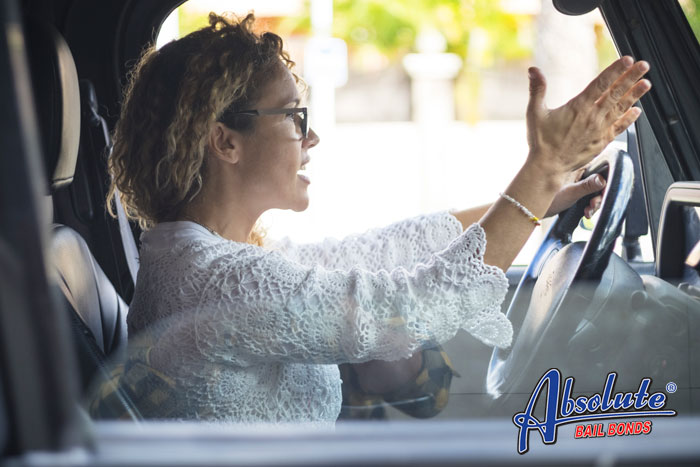
Earthquake Safety Tips
There are many great reasons to live in California. There’s also one huge drawback. In exchange for easy access to beaches and year-round wonderful weather, you always have to be prepared for an earthquake.
The good news is that most of the earthquakes we experiences are really small, little more than slight tremors that give people something to chat about. They seldom do more than cause a few things to fall off shelves. However, every once in a while, there is a massive earthquake.
Since no one really knows when a big earthquake will arrive or how bad the earthquake will be, it’s important that everyone is up to date on current earthquake safety tips.
Create a Safety Plan
Everyone who lives in your home should have a plan about how they will handle things if they’re home during a massive earthquake. Not only does this mean knowing the safest point in your house, but also having a system in place that allows you to connect with loved ones to let them know that you’re safe. Keep some survival supplies, including non-perishables, blankets, and bottled water in the earthquake designation zones.
When You’re Indoors
If you’re inside when a massive earthquake hits get somewhere protected. Ideally, this would be a closet, which has a frame that provides additional protection. If you’re not near a closet, get under a table or desk. The idea is to get some protection from falling debris. Make sure you’re well away from bookcases, windows, and anything heavy that could shift or fall.
Drop low to the ground, preferably on your knees, and stay still until the shaking stops. You should stay indoors for several minutes after the shaking stops. The only exception to staying in place is if you smell gas or smoke. If you smell gas or smoke, get out as quickly as possible while yelling for help.
When You’re Outside
If you’re outside when an earthquake starts, you want to get low to the ground while also moving away from trees, buildings, and power lines. If you’re in a vehicle, stop the car somewhere that there’s little damage of it being hit by a powerline tree, or sliding into a ditch.
Once the earthquake has passed, you need to first take care of yourself and make sure you’re not injured. Once you’re confident you’re in good shape, your next course of action is checking in with your loved ones and helping anyone who was injured during the earthquake.

Driving Drunk on Halloween
We have a tendency of thinking about Halloween as a holiday that is full of good-natured fun. It’s a holiday that allows us to wear crazy costumes, abandon our diets, and really cut loose. The only real risk we usually associate with the holiday is the need to drive carefully during the time frame that trick-or-treaters roam the streets.
What many of us don’t know is that Halloween is a holiday when many drivers overindulge and are legally drunk when they slide behind the wheel. Most of these drunk drivers are leaving Halloween parties.
College students in particular are prone to over drinking on Halloween. One research project revealed that the average college student usually drinks about 6.3 alcoholic beverages at Halloween parties. That’s about 1.4 more drinks than they would normally consume.
And it isn’t just college kids who drink too much at Halloween functions. According to the American Addiction Centers, Halloween is the fourth booziest holiday of the year. Americans consume less alcohol on Halloween than they do on the Fourth of July but more than they drink during Cinco de Mayo.
If you’re going to a Halloween party and plan on drinking alcohol, you still need to be smart. Assume that you’ll drink too much to safely drive home and create a plan. This plan could involve a designated driver, getting an Uber home, or simply staying at the host’s home until you’ve sobered up.
Hawaii patrol officers know how dangerous the streets are on Halloween night. They will be out, and they will be keeping an eagle eye open for any tell-tale signs that you’re driving drunk. It’s even possible that you’ll encounter a sobriety checkpoint on your way home.
If you are arrested and convicted of drunk driving on Halloween, the consequences will have an immediate impact on your life.
If this is your first DUI conviction, you could be sentenced to as much as six months in jail, fined up to $1,000, have your driver’s license suspended for six months, and have a vehicle ignition lock installed on your vehicle for up to a year while your driving privileges are restricted.
The third time you’re convicted of drunk driving in California, you could be sentenced to 120 days through 1 year in jail, pay a fine of $1,800, lose your driver’s license for up to 3 years, plus have an ignition lock installed on your vehicle for as long as two years.
If your drunk driving results in property damage, someone getting hurt, or the death of another person, you will face even more serious charges that could include vehicular manslaughter.
All things considered, finding a different way to get home after you’ve been drinking at a Halloween party is a really good idea.

Are you Being Stalked?
Stalking is a major problem in the United States. Every single year there are about 6 million people who find themselves in a position of having to report stalking-related incidents.
While most stalking victims are women, that’s not always the case. Each year men, who often assume that they don’t have to worry about stalkers, find themselves being followed. Some female stalkers have even murdered their victims.
The sooner you recognize the early warning signs of a stalker, the safer you will ultimately be.
When stalking victims look back on their history with their stalker, they usually notice that things started getting weird when they continually ran into the person in various locations. In the beginning, things usually don’t seem strange because it’s someone they know and because sometimes people do share the same space at the same time.
However, if the “causally running into one another” becomes a daily occurrence or the encounters happen in increasingly strange places, it’s time to start considering that a stalking situation could be developing.
Unexpected Gifts
The only thing better than getting a present is getting a present when it’s totally unexpected. The problem with unexpected presents is that they can also be a sign of unwanted attention. If someone is continually giving you things, even seemingly innocent things such as candy bars, it could be that they are developing an unhealthy obsession.
Ignoring Boundaries
Once you started getting unwanted gifts you likely started putting up some boundaries. If a person is ignoring these boundaries and continues to lavish unwanted gifts on you and is constantly entering into your personal space, it’s a sign that they have developed a potentially unhealthy attachment to you.
Property Damage
Property damage is often a tell-tale sign that a person has started to develop a stalking tendency. This is especially true if you’ve done something such as gone out with someone else or rebuffed your stalker’s advances. The property damage is a sign that it’s time to get the police involved.
It’s not uncommon for stalking behavior to escalate until it is ruining both your’s and the stalker’s lives. Ignoring the behavior doesn’t do anyone any favors. As the stalking behavior escalates, it’s important to involve the authorities. Not only will they take action to protect you, reaching this point could be what your stalker needs to realize that they’re engaging in dangerous behavior and that they need to seek professional help.

Trick-or-Treat Safety
Finally! Halloween is here. Not only does that mean cooler weather, pumpkin spice coffee, and an excuse to snuggle up with a good book rather than going out, kid will tell you that it’s time for free candy.
While kids love trick-or-treating, parents often have mixed feelings about the popular activity. Yes, it’s great to see how excited your kids get each year. The problem is that each year, parents worry how they will keep their child safe while they go from one house to another.
The good news is that there are things you can do to insure trick-or-treat safety while also allowing your children free rein to enjoy the holiday.
Make sure your children are visible, even if they’re out after dark. This isn’t complicated. Simply arm your child with a flashlight, and incorporate some flashing lights and reflective strips into their costume.
Remind your child about the rules of the road. Kids are so excited about being dressed up and obtaining as much free candy as possible, that they can easily forget things like watching for traffic. Before they head out to trick-or-treat it’s really important to remind them that they have to be respectful of motorist who are driving along the streets.
Trick-or-treat as either a family or friend unit. Instead of sending your child out on their own to trick-or-treat, make this an opportunity to make some excellent family memories and go out with your children. If work or life makes it impossible for you to join in the trick-or-treating fun, arrange for your child to go out with friends or other family members. Your child is far safer in a group than they are by themselves. Make sure a responsible adult will be watching over your children the entire time they are trick-or-treating.
Your children will want to eat their candy right away, but encourage them to wait until you get home. Waiting gives you an opportunity to inspect their candy and make sure it hasn’t been tampered with, plus it means your child isn’t potentially stopping in the middle of intersections in order to snatch a sugary treat.
Covid-19 is still a concern so make sure you keep a bottle of hand sanitizer on you and frequently apply it to your child’s hands. Remind them not to touch their face until they’re home and able to thoroughly wash their hands.
What steps are you taking to keep your child safe while trick-or-treating this holiday season?

How Serious is Road Rage
The first time the term “road rage” was officially used was during the 80s when a team of broadcasters decided the term perfectly summed up the cause of a highway shooting. Since that broadcast, road rage has become a regular part of our working vocabulary. At the same time, it has become a serious problem for every single driver.
Road rage is a burst of strong, negative emotion that is triggered by some incident that happens while a person is driving. In most cases, we’re able to clench our jaws, hang onto the steering wheel, and wait for the emotional vortex to pass.
The problem is that some of us aren’t able to ride out a burst of road rage. Some of us are can barely think during this period of emotional upheaval and subsequently, make some incredibly poor driving decisions that can put both our lives and the lives of every other person on the road at risk.
Data collected by Carsurance provides an alarming insight into how common road rage is. The site reports that eight out of every ten drivers will experience bouts of road rage while they’re driving. Even more alarming is how the same report indicates that road rage is the main reason behind a majority of car accidents in the United States.
It’s estimated that approximately two-thirds of the fatal accidents that occur in the United States are linked to road rage.
Road rage incidents are quite common. Triggers include crowded driving conditions, slow-moving traffic, frequent stops, and starts.
The driver will likely receive tickets for moving violations which could include reckless driving, speeding, improper passing, etc. If the person has a firearm in their car, and/or uses the firearm during the road rage incident they could face serious legal charges.
Considering the potential consequences of a single road rage outburst, it’s in your best interest to explore techniques that will help you keep your cool while you’re behind the wheel.

Prepare Your Pets for Fireworks
The Fourth of July is right around the corner which means people are going to set off fireworks. Even if you have no intention of being around fireworks, you need to take steps to protect your pets from them. Don’t assume that just because your neighbors have never set off fireworks in the past that you don’t have to worry about them.
The first thing you need to do to prepare your pet for the possibility of Fourth of July fireworks is to plan on the loud noises scaring your pet. Most pets hate fireworks. Consider getting a tight coat for your pet to wear which will help ease their anxiety. If you know that your pet is already sound sensitive and it suffers from anxiety, you should talk to your veterinarian about getting some calming medications.
As the evening grows long, don’t let your pet out of your house. The Fourth of July is one of those dates when you should complete your evening walk early in the evening. You want your pets to be tucked inside your home before the light show begins. If your pet has to go outside during, or even after the firework display, take them out on a leash. Animal shelters throughout California and the rest of the United States report that they get more reports of lost pets in the days following The Fourth. Almost all of these pets involve an animal who never runs off so their owner got too casual.
It wouldn’t hurt to take a current photo or two of your pet in the days leading up to the Fourth of July. Having a current photo that you can show local animal shelters, vet clinics, and post on lost pet social media sites drastically increases the odds of someone identifying your pet and returning them to you.
If you haven’t already gotten your pet microchipped, now is an excellent time to do so. The microchip makes it possible for animal shelters to quickly reunite you and your lost pet.
If possible, stay home so that you can comfort your pet. Even if they appear to be ignoring you, your presence really will make them feel better and it will also help them recover more quickly.
If you leave the house during the fireworks display, be careful while going through the doors. Expect your pet to want to bolt through the door with you.
When it comes to fireworks and pets, it’s in everyone’s best interest to prepare for the worst.

Fireworks and Safety
Fireworks are a fun and memorable way to celebrate the Fourth of July, but they can also be dangerous and in some cases have even been deadly. If you plan on setting off your own fireworks this Fourth of July, you owe it to yourself and your family to use common sense and practice firework safety.
Pay Careful Attention to Your Kids
Kids love fireworks and setting off an elaborate display with them is a great way to make new memories, but you don’t want the memories to include tears and emergency room visits. Never lose sight of the fact that fireworks and kids don’t mix. Encourage your kids to stand back while your setting up the fireworks and don’t allow them to play with any of the firework paraphernalia. Never leave your children unattended when there is even the smallest chance they could get into the fireworks.
Have a Ready Supply of Water
One of the biggest problems with fireworks in California is that they contribute to the wildfire problem. If it’s extremely hot and dry, you should want to hold off on using your fireworks until after you’ve gotten some rain. If you really can’t resist setting off the fireworks, at least make sure you have an ample supply of water on hand. In addition to keeping buckets, hoses, and sprayers close, you should also thoroughly spray the area and get everything damp before lighting the fireworks.
Don’t Light Duds
Yes, fireworks are expensive and it’s frustrating to have one that doesn’t perform well, but don’t try to get your money’s worth out of it by relighting it. Leave the duds alone. Lighting duds is how many people lose fingers and suffer extensive burns. In addition to not relighting it, liberally soak it with water before disposing of the defective firework.
Keep Medical Supplies on Hand
In addition to always wearing eye protection while setting off fireworks, you should also keep a medical supply kit close at hand. Make sure that the kit is liberally stocked with medical supplies that are designed to treat burns. If you get burned while lighting your fireworks, treat the injury right away and then seek professional medical help.
By putting safety first, you and your family will enjoy a fun Fourth of July holiday!

What is Statutory Rape? Statutory Rape Laws and Charges
Teenagers are full of two things. Hormones and emotions. The combination causes them to make questionable life choices, which includes engaging in sex. When parents learn that their teenage child has become sexually active they often find themselves worrying if their child can be charged with statutory rape.
Recent changes to California’s laws about sex with minors have made the issue even more confusing than it is in some other states.
What is Statutory Rape?
Strictly speaking, statutory rape has nothing to do about sexual consent. In statutory rape cases, both parties are usually willing. These cases aren’t about the willingness of both partners but whether they’re able to cope with the emotional and physical ramifications that go hand in hand with a sexual relationship.
According to the law, statutory rape takes place when someone has sex with a minor, who is otherwise referred to as a person who hasn’t reached the age of consent.
Is it Possible for a Minor to be Charged with Statutory Rape?
The question of whether it’s possible for two minors to be accused of statutory rape doesn’t have a clear legal answer.
According to California Penal Code Section 261.5, statutory rape takes place whenever someone has sex with someone who hasn’t reached their eighteenth birthday. According to that, if a sixteen-year-old couple decides to have sex, both of them can be charged with statutory rape.
The problem is that for the charges to stick, the court has to determine which member of the couple is the victim and which is the aggressor, something that’s nearly impossible to do when both are minors. Due to the legal complexities of the situation, the charges are usually dropped and the court lets the parents decide how to handle the matter.
Penalties for Statutory Rape in California
Statutory rape charges in California are a serious matter. Statutory rape is one of the state’s many famous wobbler offenses. No two cases are handled the same way, which can make it difficult to guess what the final results will be. The most extreme cases can result in a sentence that includes 3 years in jail as well as a $10,000 fine.
Sometimes the court requires that the defendant register as a sex offender, but there are also situations where that hasn’t happened. It largely depends on the age of the two people involved in the case as well as the type of relationship they’re engaged in.



